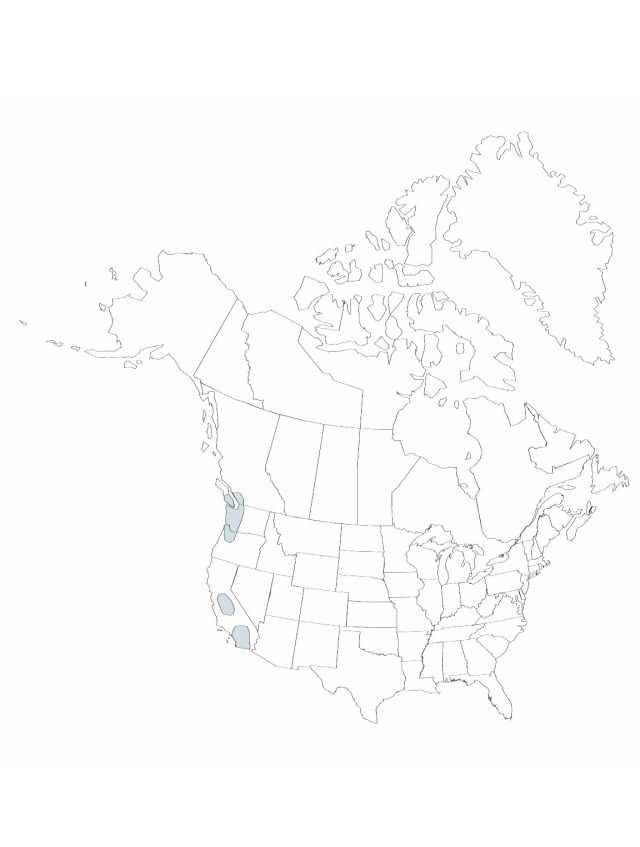Juncus oxymeris
Trans. Acad. Sci. St. Louis 2:483. 1868.
Herbs, perennial, rhizomatous, 3–6 dm. Rhizomes 1–2 mm diam. Culms erect, 2–4 mm diam. Cataphylls 0–1, straw-colored, apex narrowly acute. Leaves: basal 1–3, cauline 3–4, straw-colored; auricles absent; blade 3–20 cm × 3–7 mm. Inflorescences panicles of 10–50 heads, 6–20 cm, erect to ascending branches; primary bract erect; heads 3–11-flowered, turbinate to hemispheric, 4–8 mm diam. Flowers: tepals straw-colored, lanceolate, 2.5–3.2 mm, nearly equal, apex acute to narrowly acuminate, mucronate; stamens 6, anthers 0.5–1.5 times length of filaments. Capsules exserted, chestnut brown, 1-locular, broadly lanceoloid to narrowly oblong, 3.3–4.7 mm, apex tapering to beak, separating at dehiscence. Seeds obovoid, 0.5 mm, not tailed.
Phenology: Fruiting late spring–fall.
Habitat: Stream and lake shores, montane meadows and seasonally emergent wetlands
Elevation: 100–2000 m
Distribution

B.C., Calif., Oreg., Wash.
Discussion
Juncus oxymeris should be expected in Mexico (Baja California).
Selected References
None.